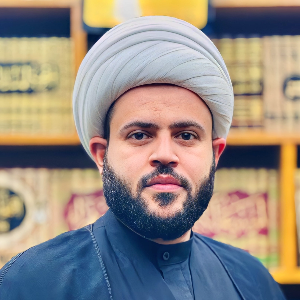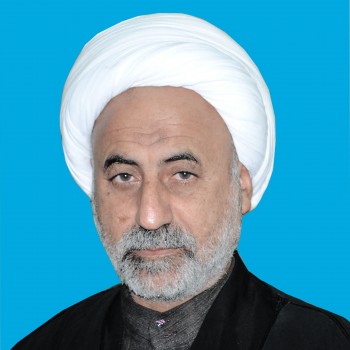History of Medicine
Medical history reflects a gradual transition from supernatural to natural explanations of human diseases and disorders. Speculation with few facts characterized prehistoric medicine; that is, “supernatural” medicine men blending magic, religion, and social customs with variably effective herbal medicines. The earliest “medical text” (1550 B.C.E.), containing spells, incantations, and herbal remedies, was found in a tomb in Thebes on the Nile. Many rules of hygiene and health, some with bases in science and others in tradition are in the Hebrew Torah (1200 B.C.E.). Medical advances came as technology and social beliefs permitted; for example, cellular biology required the development of the compound microscope, and anatomy could not develop until dissecting the human body was no longer considered a sacrilege.
Hippocrates (460-377 B.C.E.) is known for his writings and the founding of a Grecian “medical school.” Physicians today still take the Hippocratic oath, an ethical code for care of the ill and dying. Greek “medicine” was mostly caring for and comforting the ill and appealing to gods. Aristotle (384-324 B.C.E.) inherited the traditions of Socrates, Plato, and Hippocrates, and perpetuated a theory of disease based on four humors and four qualities. This theory was accepted for almost two thousand years. Alexander the Great spread Grecian teachings as far as Afghanistan and Egypt.
During Roman dominance, Galen (c.e. 131-201), dissected animals (such as pigs and monkeys) because human dissection was forbidden. His experiments defined many neurological deficits, but he based his physiology on natural, vital, and animal “spirits” that reflected his religious views. Roman engineering contributed greatly to hygiene and sanitation with sewer systems and aqueducts.
Many eminent universities were founded during the Middle Ages, notably in Paris (1110), Bologna (1158), Oxford (1167), Montpellier (1181), Cambridge (1209), Padua (1222), and Naples (1224). In London, St. Bartholomew’s hospital (1123) and St. Thomas’s hospital (1215) opened. With the human body less sacrosanct, postmortem examinations and dissections occurred. Medicine grew to be based on a better knowledge of anatomy, recorded in accurate drawings by Vesalius (1514-1564) and others during late Middle Ages and early Renaissance.
William Harvey’s studies (1628) functionally defined the cardiovascular system, although he lacked a knowledge of capillaries. Zacharias Jansen (1590) introduced the compound microscope and subsequent improvements by Galileo Galilei and Antony van Leeuwenhoek accelerated microscopic study. Marcello Malpighi (1661) described capillaries and Leeuwenhoek described spermatozoa (1679) and bacteria (1683). Robert Boyle’s chemical studies (1661) finally dispelled Aristotelian concepts of elements.
The Hunter brothers founded the Hunter School of Anatomy in London (1770). Crawford Long and William Morton invented ether anesthesia for surgery and Robert Liston amputated patients’ limbs under ether anesthesia in 1846. Surgery blossomed thanks to anesthesia, but surgeons still depended on daylight and lacked sterile technique. The “golden age of surgery” began when such limitations were overcome in the twentieth century. Later highlights include heart-lung machines (1951), heart valve replacement (1952), kidney transplantation (1954), liver transplantation (1964), and heart transplantation and coronary bypass surgery (1967). Non- invasive imaging, ultrasound (1950s), and computerized axial tomography (CAT, 1972), followed later by nuclear magnetic resonance (NMR) tomography, dramatically reduced exploratory surgery.
In 1858 Rudolf Virchow published his renowned Cellular Pathology and Louis Pasteur proved there was no spontaneous generation of life. By 1879, Pasteur grew streptococci from a case of puerperal (childbed) fever and vaccinated sheep for anthrax (1881) while Robert Koch discovered the tuberculosis bacillus (1882). Alexander Fleming (1928) noted that Penicillium mold killed staphylococci, however, it took Howard Florey and Ernst Chain until 1938 to purify it. It was in general use by 1944. Viruses were first isolated and chemically defined in the 1950s and Albert Sabin’s polio virus vaccine appeared in 1957. The U.S. Centers for Disease Control recognized HIV (human immunodeficiency virus) and AIDS (acquired immunodeficiency syndrome) in 1981.
In the nineteenth century, the central nervous system was believed to be a syncytium with all neurons structurally continuous. Proponents of the “neuron doctrine” (especially Santiago Ramon y Cajal) challenged this (1890s), believing the nervous system contained individual nerve cells, distinct anatomically and functionally. Ramon y Cajal and Camillo Golgi (a supporter of the syncytial theory) shared the 1906 Nobel Prize. Charles Scott Sherrington (1906) published Integrative Action of the Nervous System and shared the Nobel Prize with Edgar Douglas Adrian for nerve impulse work (1932). Electron microscopic studies (1960s) demonstrated points of “near contact” between neurons called synapses, final proof for the neuron doctrine.
Hormones were described by William Bayliss and Ernest Starling (1902), and Earl Sutherland described their molecular mechanisms of action in postmortem after death the 1950s. James Watson and Francis Crick discovered deoxyribonucleic acid (DNA) structure in 1953, but the Human Genome Project wasn’t initiated until 1986. Human genetic sequencing is expected to be complete in 2003 (a draft of the human genome was completed in 2001). Genetic engineering and cloning are ethical issues for the twenty-first century.
References
Porter, Roy, ed. The Cambridge Illustrated History of Medicine. Cambridge, England: Cambridge University Press, 1996.
Rhodes, Philip. An Outline History of Medicine. London: Butterworths, 1985.
















